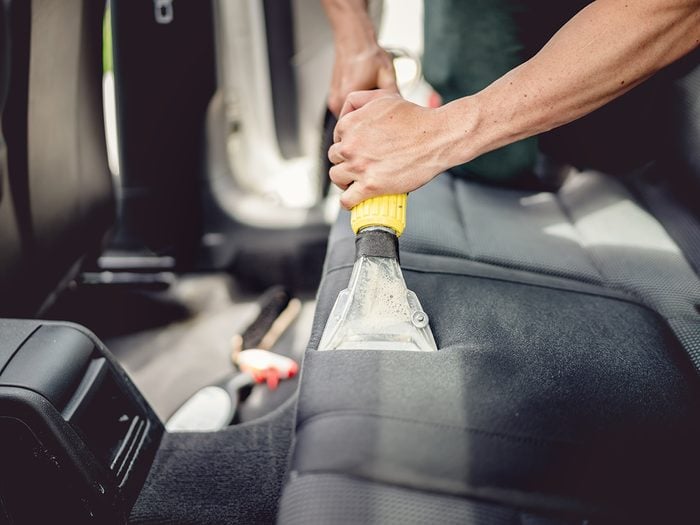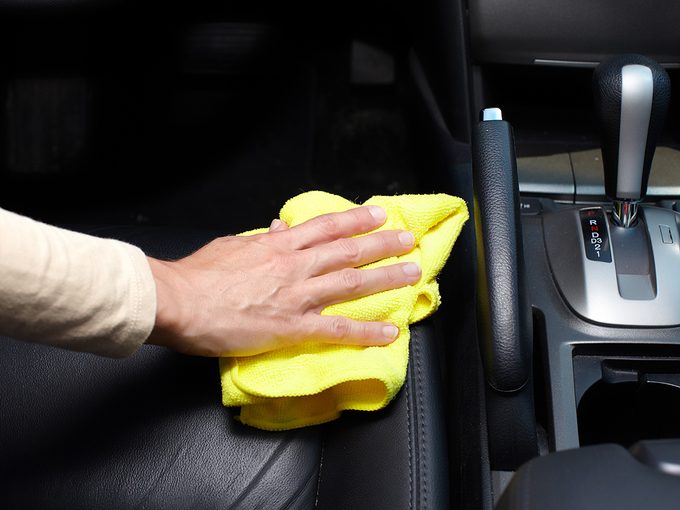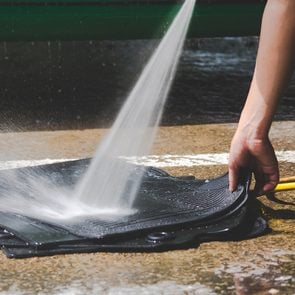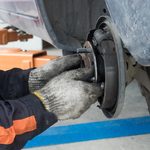How to Clean Car Seats Like the Pros

Follow these step-by-step instructions for an interior that looks as though it's been professionally detailed.
Like oil and filter changes and other routine mechanical maintenance tasks, regular cleaning does wonders to prolong the life of your car’s interior.
“With all car seats, prevention is better than cure, so I advise that spending a little time each week keeping your car clean and hygienic will pay off in the long run,” says John Peterson, editor of Safe Drive Gear and an auto retailer senior sales manager.
To clean car seats like a professional, keep these nine tips in mind:
Start with Vacuuming
Thoroughly vacuuming car seats as the first cleaning step makes the rest of the job easier. “This will not only remove dust, debris and pet hair but also prevent you from simply pushing it deeper into the seat padding,” says Peterson.
Michael Stoops, senior global product and training specialist at Meguiar’s, recommends vacuuming with a soft brush head to get inside all the creases on the seat. Use the crevice tool on your vacuum to reach between the seat and the console, as well as other hard-to-reach spots.
Don’t Skip Stain Treatments
Ground-in dirt, melted chocolate, grease stains from drive-thru fare… they all have a way of leaving a lasting mark on car seats. Work an upholstery or leather cleaner gently into the stain with a soft scrubbing brush. Stoops cautions not to scrub too aggressively on leather to avoid scratching the surface.
Always test a new cleaner (store-bought or homemade) in a hidden spot to ensure it won’t discolour or damage your car upholstery. (You probably have all the ingredients you need to make these DIY carpet stain removers.)
Try Homemade Solutions
Head to your kitchen and mix up a homemade car seat cleaning solution with a few common household products.
Mix two cups water, one cup vinegar and approximately a tablespoon of dish soap in a spray bottle. Spray lightly on any stains or especially dirty spots, scrub gently and rinse lightly with clean water. Finish by dabbing the spot with a microfibre cloth to absorb excess moisture.
More Isn’t Better
Use water and cleaner sparingly. These liquids can be absorbed deeply into the seat where they won’t dry readily.
A dry foam cleaner works well for cloth seats because it cleans without a lot of water. “Avoid using anything that could saturate cloth seats, thereby getting the foam wet, as this could lead to mold growth,” says Stoops. Plus, many dry foam cleaners come with built-in brushes, making scrubbing even easier.
For leather seats, use a leather cleaner and conditioner. Peterson suggests paying attention to any creases in the seats and spots where skin or hair contacts the leather.
Clean from Top to Bottom
With vacuuming and stain treatment complete, move on to a thorough washing. “Go over every part of the seat starting at the top so that any dirty solution drips down,” says Peterson. When your brush gets dirty, Peterson says to be sure to rinse it in clean water and shake to remove excess moisture.

Hit Every Part
Besides the headrest, the back and the seat, spend some time cleaning the other seat components, such as the seat belt and buckle. Don’t forget the front of the seat where the backs of your legs hit, and beneath the seat.
Dry Thoroughly
Plan on letting your newly cleaned car seats dry for several hours or overnight. Peterson says you can speed up the process by removing excess moisture with an absorbent microfibre cloth. (Here are 13 car washing tips the pros don’t want you to know.)
Give Special Considerations for Leather
Keep in mind that leather interiors need specialty products formulated for leather. Following up cleaning with conditioning certainly adds an extra step, but the effort is worth it. “A good leather conditioner will keep the leather moist which prevents cracking, while also providing UV protection to maintain the colour,” says Peterson.
Consider Seat Protectors
Thorough and regular cleaning will keep car seats looking like new, but seat protectors also help.
“If you’re into a very active lifestyle and spend a lot of time at the beach, or you’re into running or cycling and get back to your car a bit sweaty and dirty, there are a variety of temporary seat covers on the market that you can install in a snap before your outing,” Stoops says. “When you get back home, these covers come off as easily and quickly as they go on and most are machine washable.”
Select covers that are tailored specifically for your make and model. Ensure they are compatible with airbags and seat belts. Consult your owner’s manual for recommendations on after-market accessories such as seat covers.
Next, check out these car interior cleaning tips to refresh your ride.






